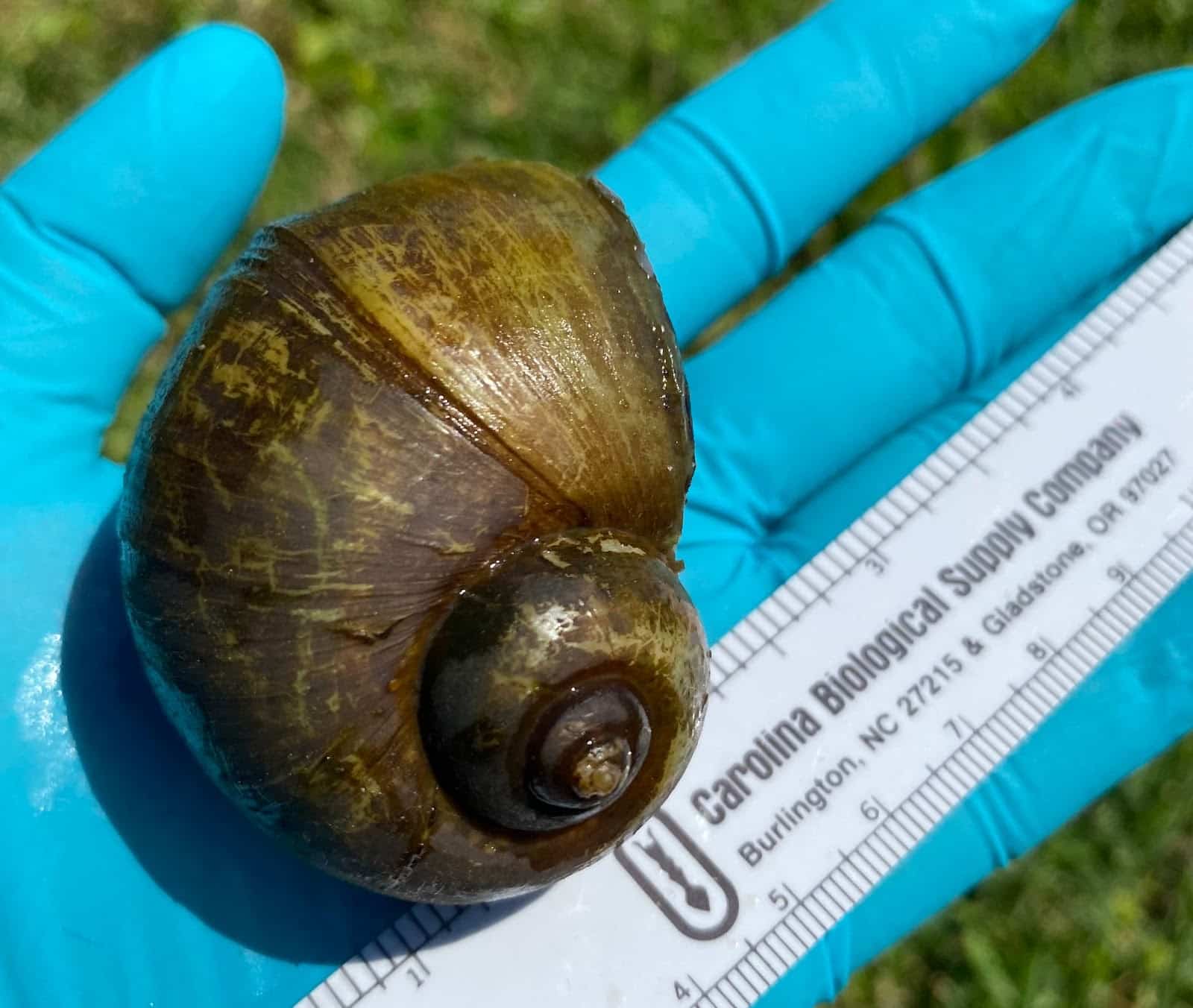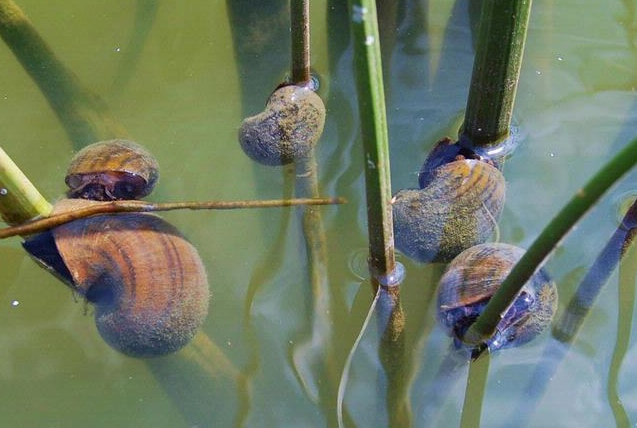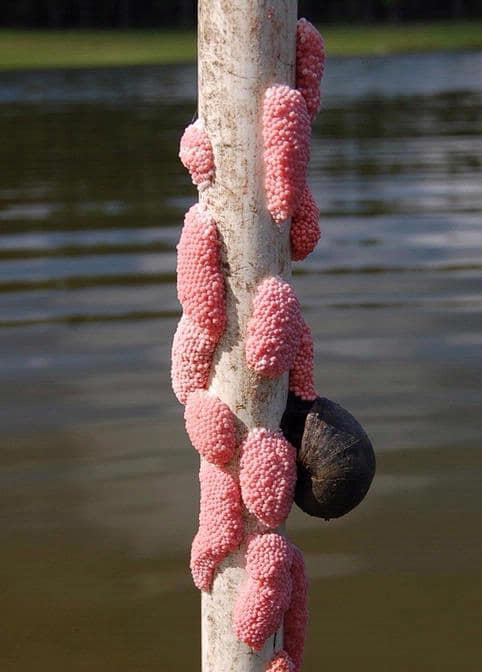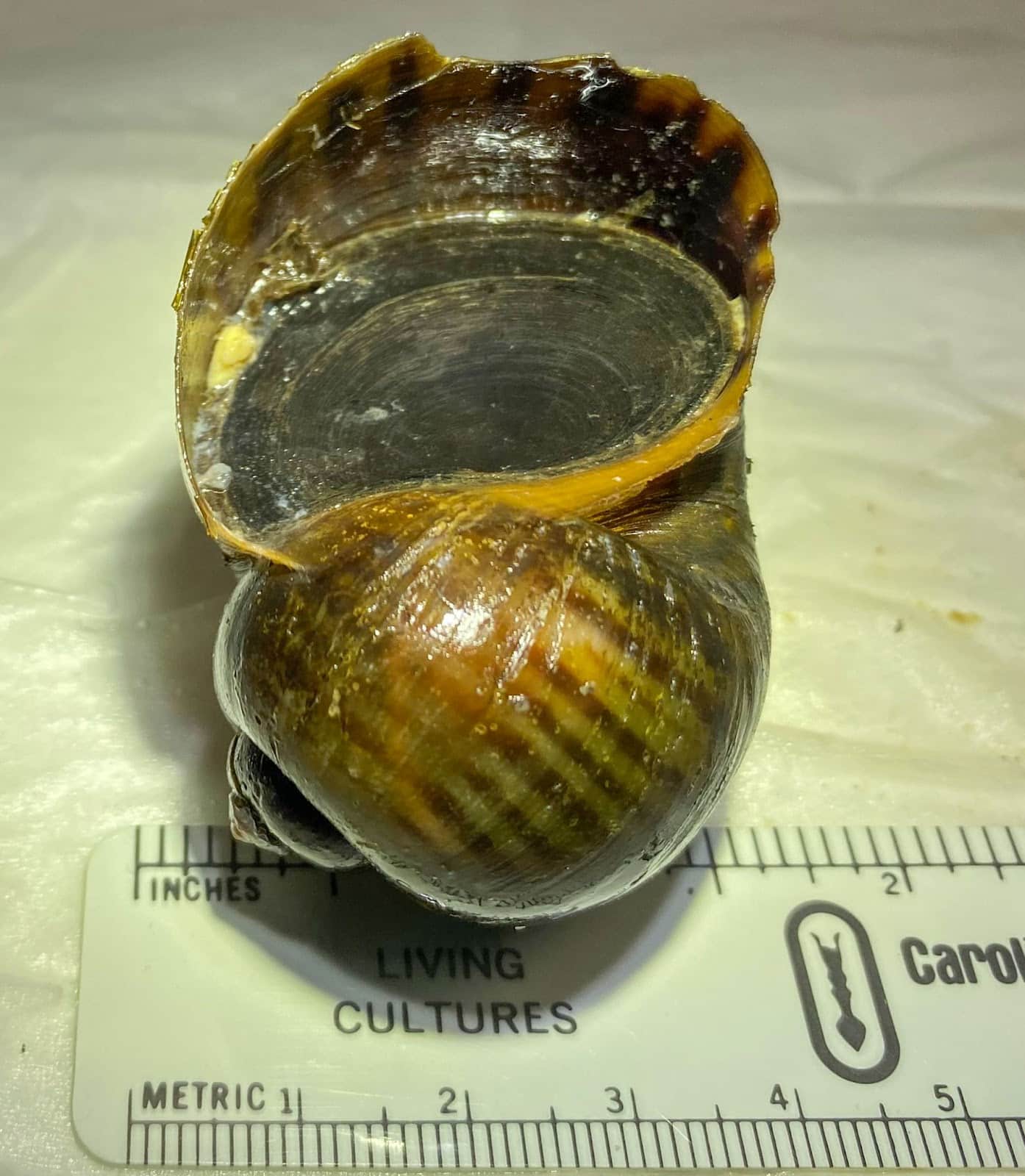AGFC discovers invasive apple snails in live crawfish shipments
ON 04-09-2024

LITTLE ROCK — The Arkansas Game and Fish Commission needs the public’s help in preventing the spread of giant apple snails, an invasive aquatic species native to South America, recently found in shipments of live crawfish from Louisiana.
Giant apple snails have not yet been found in the wild in Arkansas, but have been established in Louisiana for many years.The Arkansas Game and Fish Commission has worked with the state of Louisiana to prevent the spread of this invasive species through many potential pathways of introduction, including aquarium pet releases and educational campaigns on cleaning of boats and recreational equipment. Additional vigilance by Arkansans through inspections of any live crawfish shipments (no matter the source), will help prevent further spread of this invasive species that could affect native wildlife and Arkansas’s rice industry.
Giant apple snails, also known as island apple snails, are among the largest freshwater snails with shells typically between 2 to 4 inches tall and large specimens reaching 6 inches tall. They were first documented in Florida in the 1980s and have since established wild populations in Arizona, Texas, Louisiana, Mississippi, Alabama, Georgia, Florida, South Carolina and North Carolina. Apple snails are popular in the aquarium trade due to their large size and handsome shells, however they can quickly exceed the capacity of their enclosure. Irresponsible aquarium dumping is believed to be the main means of apple snail introduction in the United States. Apple snails, as with any exotic plant or animal, should never be released into the wild.
They spend most of their time in water and can survive in low oxygen environments. They lay bright pink egg masses just above the water on tree stumps and other objects. Each cluster contains on average 1,500 to 2,000 eggs, and females can lay a new cluster every 5 to 14 days.

Apple snails consume large quantities of aquatic plant material, damaging important habitat for native fish and wildlife. They cause significant damage to rice crops in Asia and are considered a serious rice crop pest in the U.S., affecting rice production in Texas, Louisiana and Florida.
In addition to being an agricultural pest and damaging aquatic ecosystems, these snails can also threaten human health. Apple snails are known to carry rat lungworm, a parasite that can infect mammals (including humans) through the consumption of uncooked snail meat or contaminated produce. People with mild infections usually recover fully, but severe infections of the parasite can cause eosinophilic meningitis. Additionally, the snail’s eggs contain a neurotoxin that can cause skin and eye irritation if handled.

According to the Louisiana Department of Wildlife and Fisheries, giant apple snails were first discovered in New Orleans in 2006, and have since spread to nearly 30 parishes in the southern half of the state. Louisiana is the number one producer of crawfish in the United States. For more than a decade, apple snails have infested Louisiana crawfish farms, clogging crawfish traps, competing with crawfish for food, and resulting in the loss of entire crops. State and federal agencies continue to work with the Louisiana crawfish industry to help mitigate the spread of these pests. However, the continued range expansion and high abundance of apple snails increases their risk of hitchhiking in crawfish shipments.

AGFC is coordinating with other state and federal agency partners and the aquaculture industry to increase public awareness of apple snails coming into Arkansas through live crawfish shipments and monitor crawfish shipments coming into the state.
All live crawfish should be inspected for snails, their eggs and other debris. Anyone spotting an apple snail, pink egg mass or aquatic snail larger than a quarter in diameter in purchased live crawfish or in the wild should take a picture, note the location and report it immediately. If found in live crawfish shipments, please use the Apple Snail Reporting Form available at www.agfc.com/ans. If found in the wild, please report them on the Aquatic Nuisance Species Reporting Form found on the same web page. You may also contact Matt Horton, Aquatic Nuisance Species Program coordinator at 501-604-0485.
Dispose of any snails by double-bagging in a garbage bag and taping the bag closed to seal it. If available, place in a freezer for 24 hours and throw away in a trash receptacle. Do not discard apple snails onto the ground, in a ditch, pond, or other natural environment or keep them as a pet. Wear gloves and thoroughly wash hands with hot soapy water after handling snails.
According to the Arkansas Code of Regulations, crawfish imported for human consumption may not be released, stocked in ponds or used as bait.
Contact Horton or visit www.agfc.com/ans, for more information on giant apple snails and other aquatic nuisance species in Arkansas.
####
CUTLINES:
SNAIL IN HAND
These were just a few of the giant apple snails recently found in live crawfish shipments from Louisiana. AGFC photo.
SNAILS ON GRASS
Giant apple snails are voracious eaters and can cause serious damage to rice crops. Photo courtesy of Jess Van Dyke, Snail Busters, LLC. Bugwood.com.
SNAIL WITH PINK EGG MASSES
Apple snails lay thousands of eggs in pink clusters just above the water and can overpopulate an area quickly. Photo courtesy of Jess Van Dyke, Snail Busters, LLC. Bugwood.com.
SNAIL ON RULER
Any snail larger than a quarter found in Arkansas should be considered non-native. Giant apple snail shells can reach 6 inches in diameter.
Recent News
Subscribe to Our Weekly Newsletter E-mails
Don’t miss another issue. Sign up now to receive the AGFC Wildlife Weekly Newsletter in your mailbox every Wednesday afternoon (Waterfowl Reports are published weekly during waterfowl season and periodically outside the season). Fishing Reports arrive on Thursdays. Fill in the following fields and hit submit. Thanks, and welcome!


